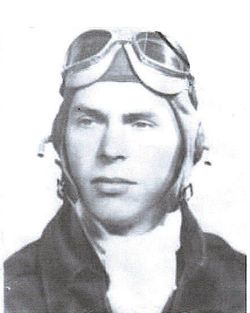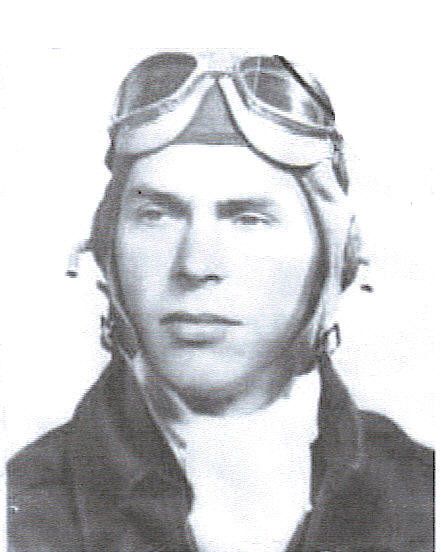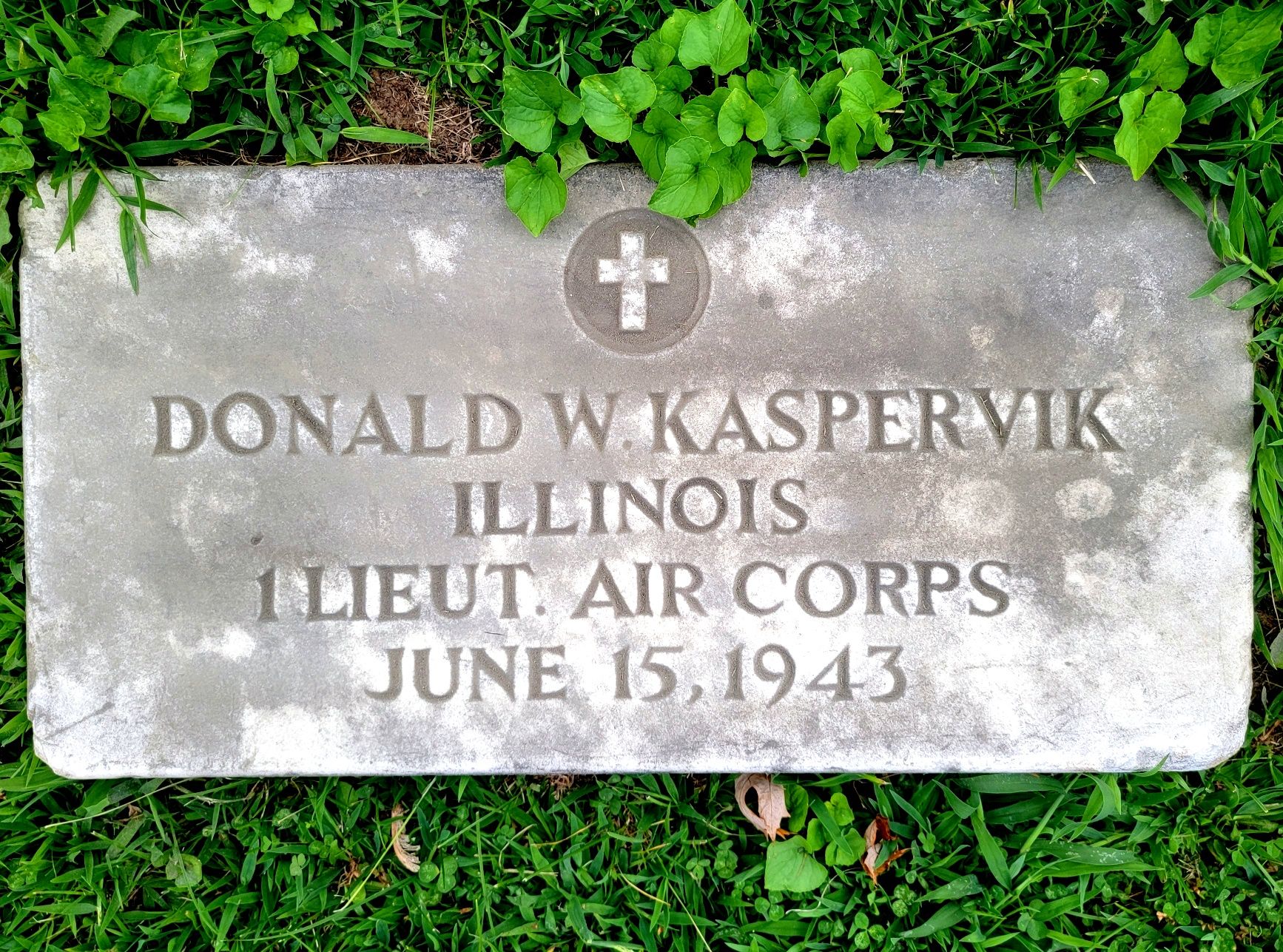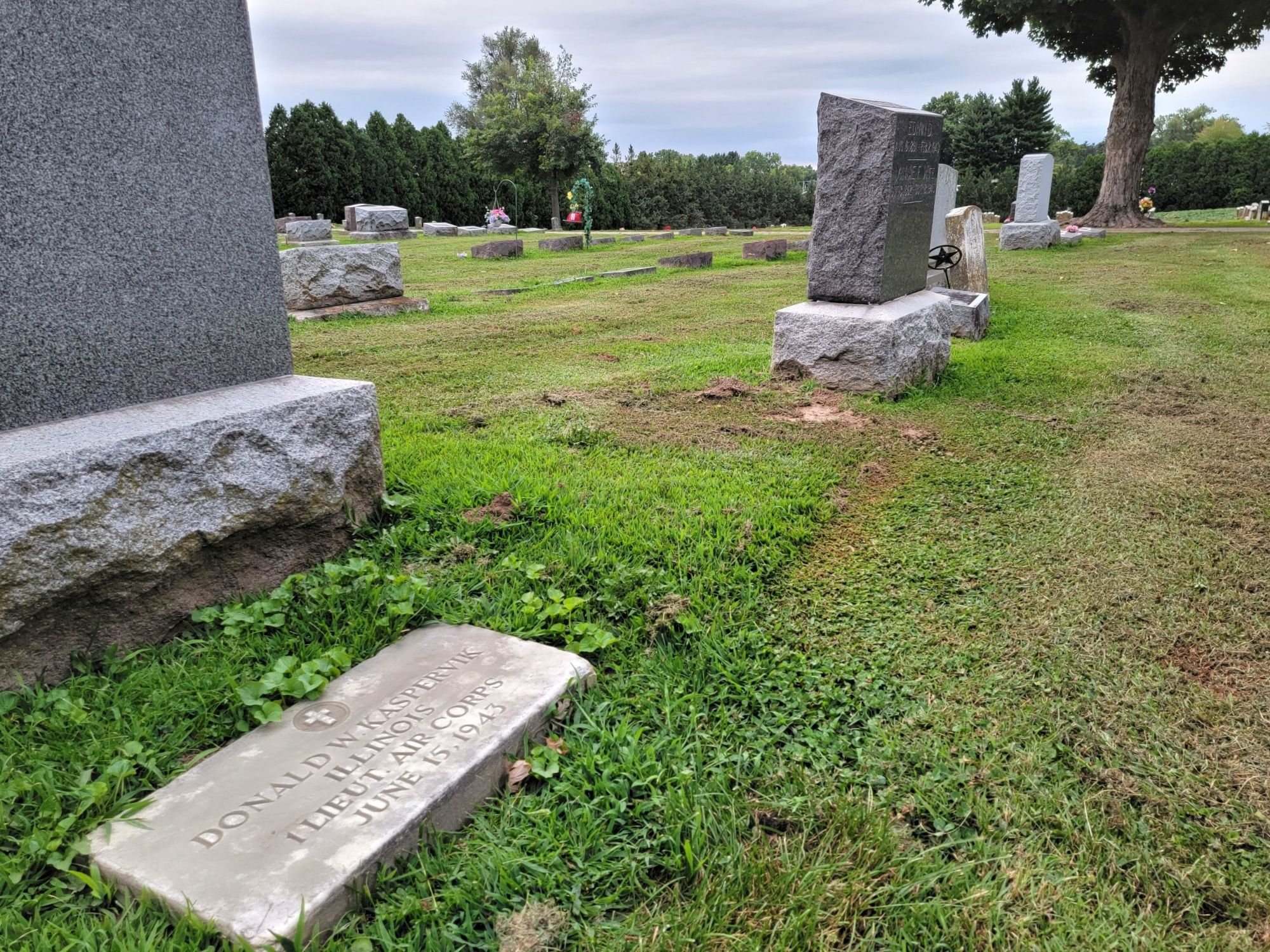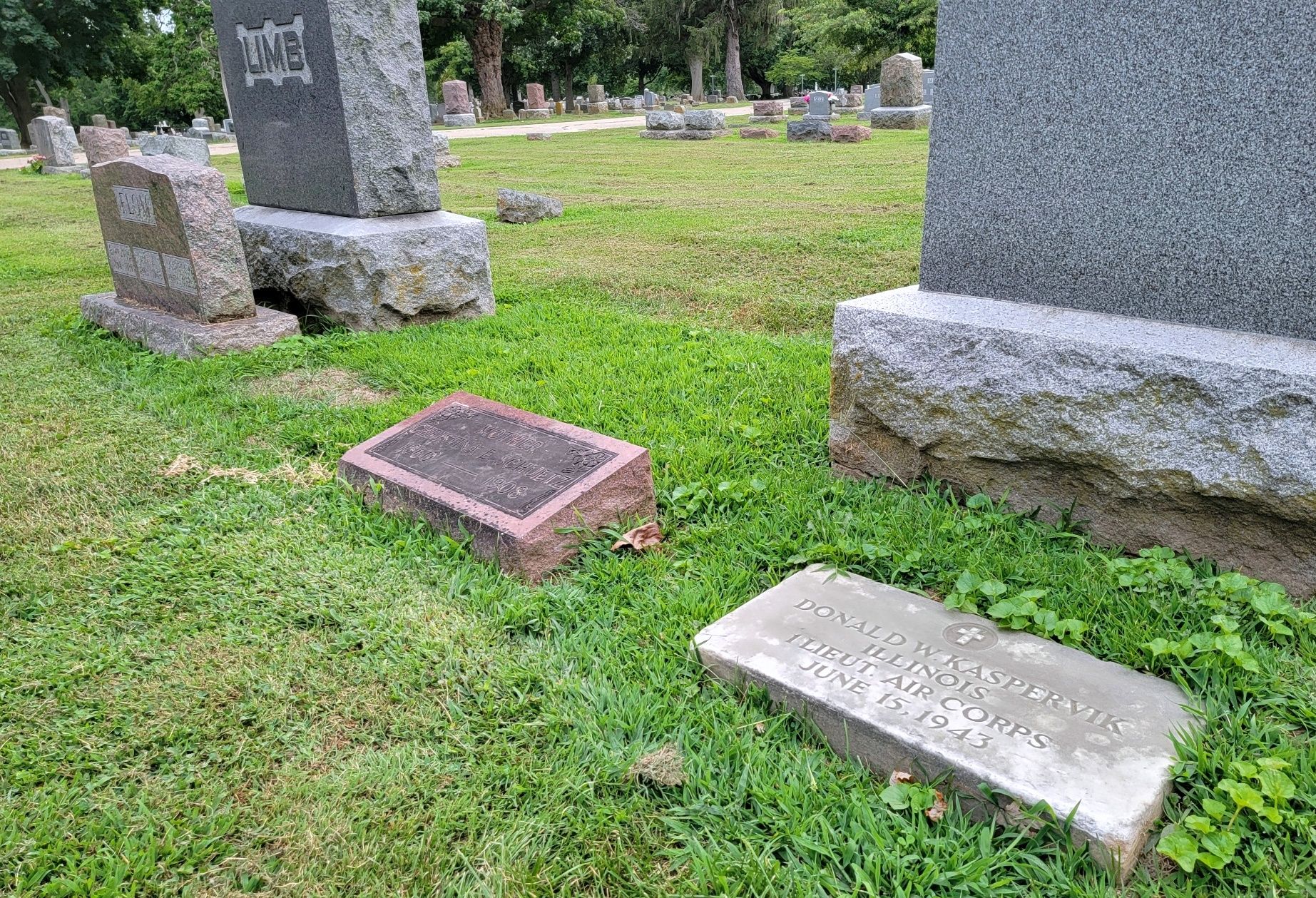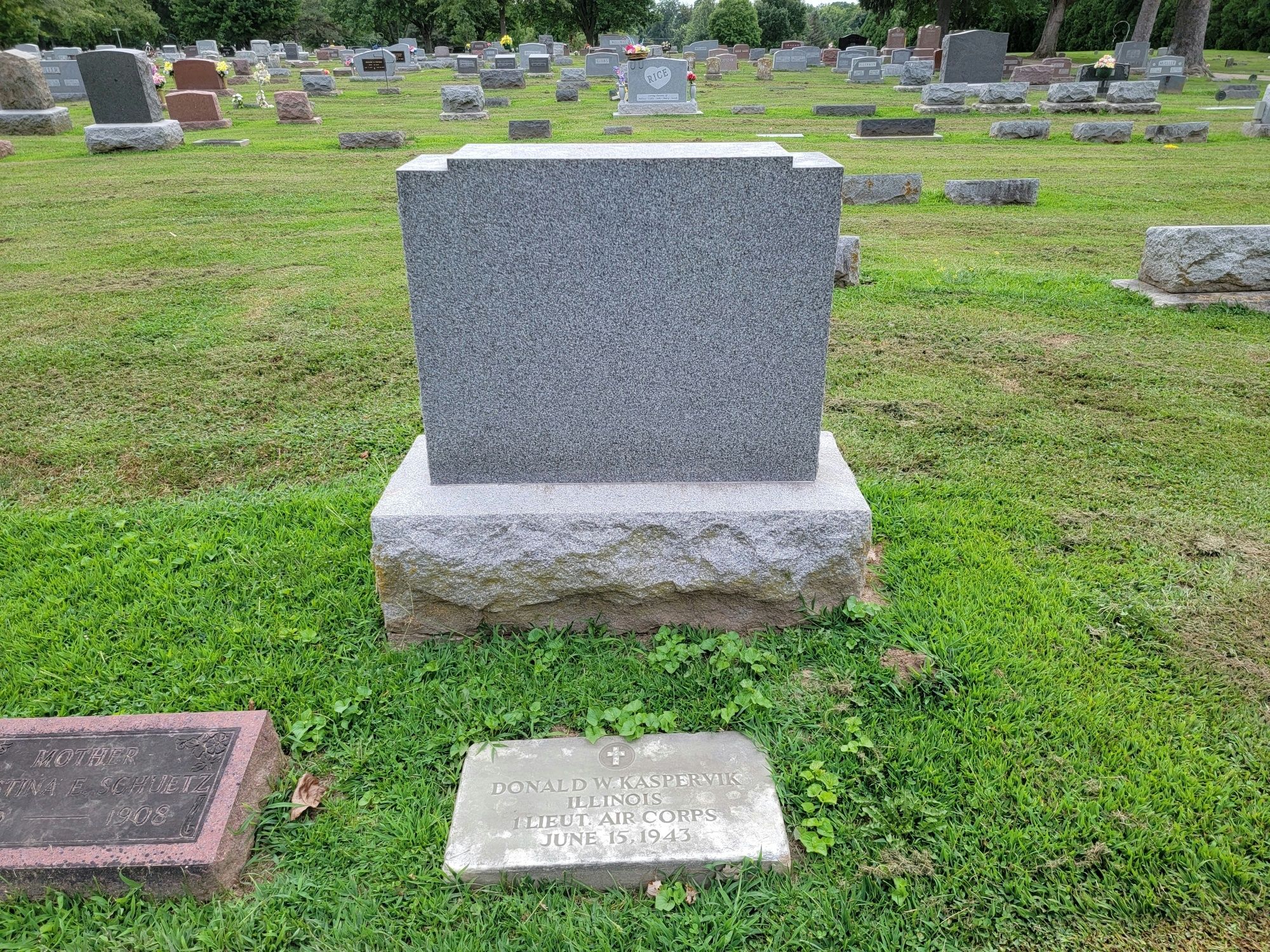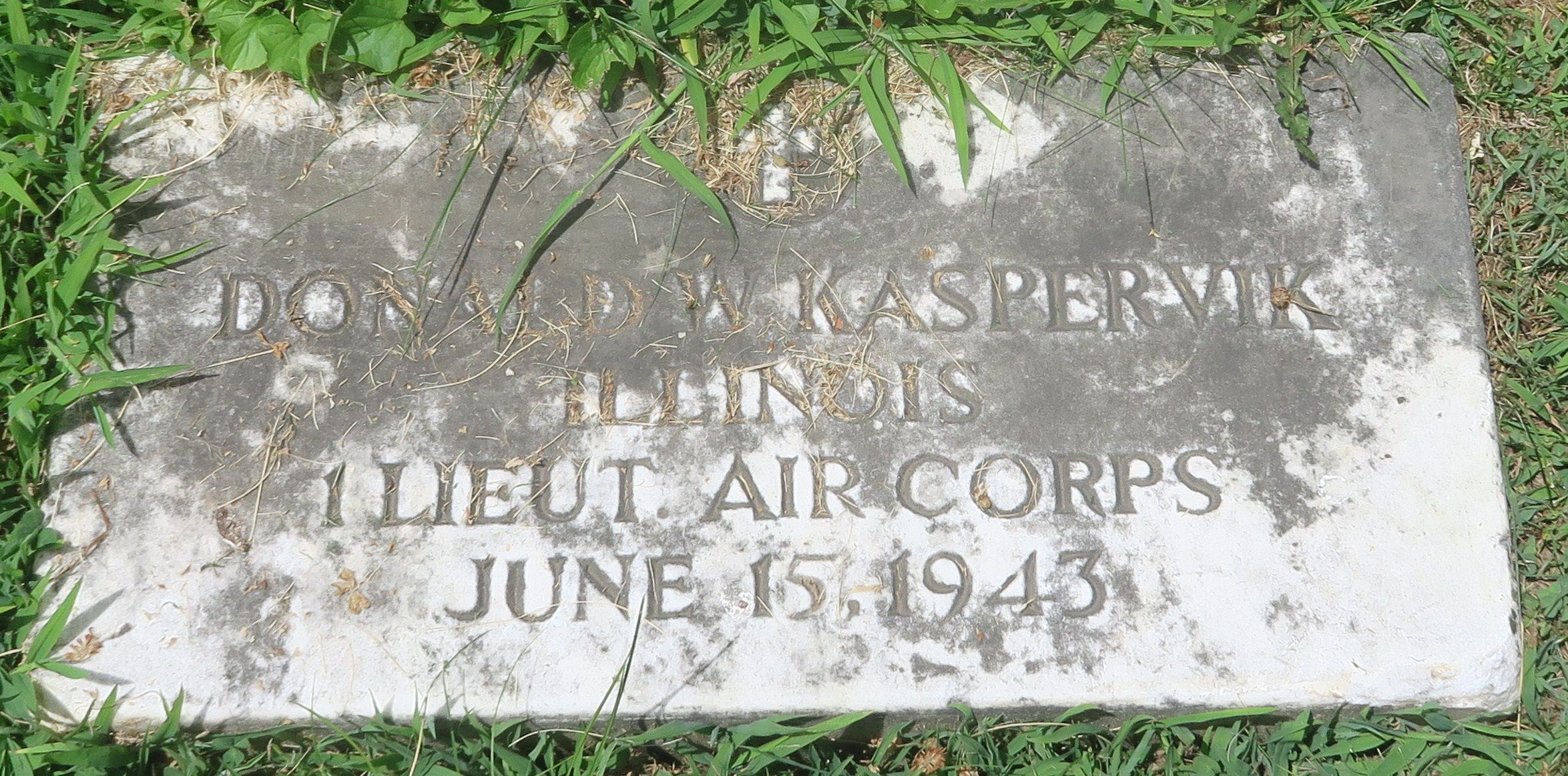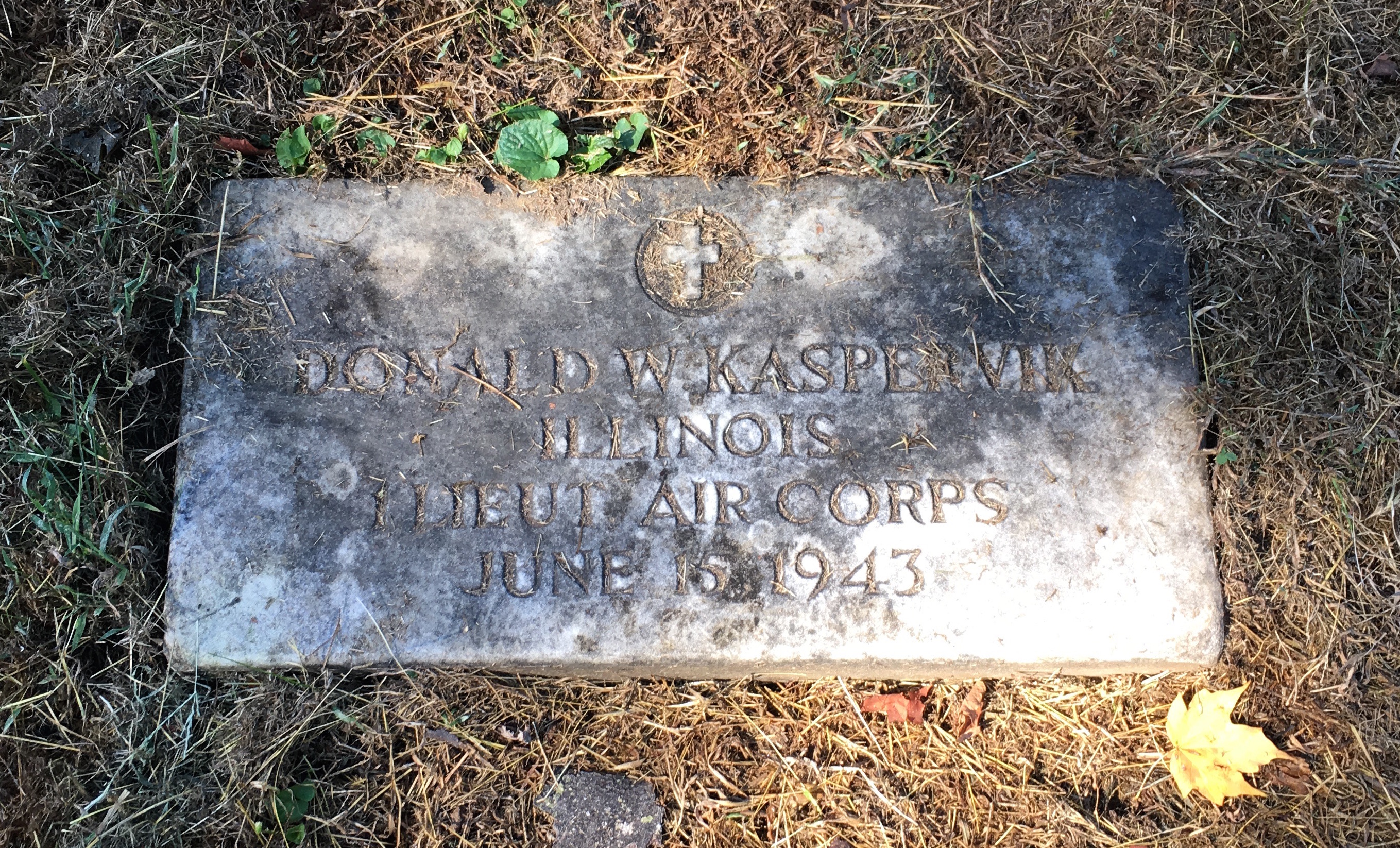Pilot 1st/Lt. Donald W. Kaspervik DNB
Home: Adams Co, IL
Squadron: 576th Bomb Sq 392nd Bomb Gp
Service ID: 0-370151.
Target: Training mission
Mission Date: 15-Jun-43
Serial Number: #42-7146
Aircraft Model B-24E
Aircraft Letter:
Aircraft Name:
Location: New Mexico
Cause: Mid Air Collision
On this day, nine planes took off at 0630 hours from Alamogordo on a navigation, formation, and bombing mission. From the 576th Squadron, 1st Lt Donald W. Kaspervik was leading the first element of the formation and 2nd Lt Donald R. Lembright was in the No. 3 position.
An article in the February 2006 issue of the 392nd BGMA News provides these details: At approximately 0650, "the group was headed due north and had leveled off at 12,000 feet (about 3,000 feet above the mountains). Lembright was dealing with turbulence caused by up- and down-drafts from the mountains and engineer T/Sgt Robison heard him tell the copilot that the plane was trying to skid to the right. To keep his position on #146, Lembright had to look due east, directly into the rising sun. Robison got the pilot's sunglasses from storage and was ready to hand them over when the flight smoothed out.
Without any warning, #071 slid toward the lead ship so that one propeller hit the lower part of #146's tail surface. Then #071 moved slightly forward, causing even more damage to #146. The collision knocked the left bomb bay door from Lembright's plane and tore the entire tail section from Kaspervik's.
Both ships veered to the left. 1st Lt Alfred Scarlata, flying lead in the No. 3 element, saw Kaspervik head down in a glide and Lembright pull his ship up in a steep climb that resulted in a stall. From that point on, he told the Board of Inquiry, "I don't think they had a Chinaman's chance of getting out of that plane… They didn't have enough altitude…and the violent action of the ship just held them in the airplane."
1st Lt James H. Roper, flying directly behind Kaspervik, said debris from the collision broke his windshield, made a hole in the leading edge of his right wing, and punctured his cowl flaps.
Robison's plane was down to 1,000 feet before he was able to push himself out the hole left by the missing bomb bay door-only to discover that his chute was on backward. When he finally pulled the ripcord with his left hand, he was at about 500 feet. He landed hard, and by the time he recovered, both planes had crashed. He got to the crash site as fast as he could but found no other survivors. Robison was later diagnosed with a fractured spine. After an extended hospital stay, he was medically discharged from the Service in 1944. He died in 1971.
Both crews were on their last flight before starting their pre-deployment leave. The training had been grueling. In an unmailed letter to his wife and two-year old daughter written the day before he died, 1st Lt Kaspervik said he had spent over eight hours in the air on June 13 and had gotten up at 3:30 a.m. for the mission on the 14th. He commented that "we're getting awfully close to that pushing off date." He wrote, "I know I'll be back but it will probably be quite awhile. If it were only a month it would be too darn long!" The letter was mailed to the Kasperviks by the officers of Crew 6-7, Flight B, because they knew it would be a "cherished treasure" for the family.
1st Lt Kaspervik's death was just the first his mother had to face. In his 1989 Memorial Day speech at the Sicily-Rome American Cemetery, Pres. George Bush spoke about brothers Donald, Preston, and William Kaspervik, all of whom joined the Air Corps and died in service to their country. While Donald is buried in their hometown of Quincy, Illinois, William and Preston are buried side by side in the Sicily-Rome American Cemetery. They died ten days apart in January 1944. As Pres. Bush put it, they are "buried here in soil that they helped free. Brothers in life, brothers in arms, brothers in eternity."
392nd Commander Lt. Col. Irvine Rendle sent a letter of condolence to Mrs. Kaspervik on June 16, 1943. His words are a fitting tribute to each man killed in that tragic accident: "He did not lay down his life upon the field of battle, but his sacrifice is the same. He was preparing himself to defend those liberties and principles which had been taught to him from his early youth and which were a part of his very being. This may be small consolation to you in your bereavement, but you may well be proud both of his life and of his death."
#42-7146 Crew:
1LT Donald W Kaspervik, Pilot
2LT Ray E Ward, Co-Pilot
2LT John V Andrews, Navigator
2LT Bruce G Ellis, Bombardier
2LT Edward V Handy, Jr., Observer
SSGT Eldon F Ressler, Engineer
SSGT George L Scott, Gunner
SSGT Arthur P Wikle, Gunner
SSGT Allen J Alexander, Gunner
SGT Allen Chamovitz, Radio Operator
Pilot 1st/Lt. Donald W. Kaspervik DNB
Home: Adams Co, IL
Squadron: 576th Bomb Sq 392nd Bomb Gp
Service ID: 0-370151.
Target: Training mission
Mission Date: 15-Jun-43
Serial Number: #42-7146
Aircraft Model B-24E
Aircraft Letter:
Aircraft Name:
Location: New Mexico
Cause: Mid Air Collision
On this day, nine planes took off at 0630 hours from Alamogordo on a navigation, formation, and bombing mission. From the 576th Squadron, 1st Lt Donald W. Kaspervik was leading the first element of the formation and 2nd Lt Donald R. Lembright was in the No. 3 position.
An article in the February 2006 issue of the 392nd BGMA News provides these details: At approximately 0650, "the group was headed due north and had leveled off at 12,000 feet (about 3,000 feet above the mountains). Lembright was dealing with turbulence caused by up- and down-drafts from the mountains and engineer T/Sgt Robison heard him tell the copilot that the plane was trying to skid to the right. To keep his position on #146, Lembright had to look due east, directly into the rising sun. Robison got the pilot's sunglasses from storage and was ready to hand them over when the flight smoothed out.
Without any warning, #071 slid toward the lead ship so that one propeller hit the lower part of #146's tail surface. Then #071 moved slightly forward, causing even more damage to #146. The collision knocked the left bomb bay door from Lembright's plane and tore the entire tail section from Kaspervik's.
Both ships veered to the left. 1st Lt Alfred Scarlata, flying lead in the No. 3 element, saw Kaspervik head down in a glide and Lembright pull his ship up in a steep climb that resulted in a stall. From that point on, he told the Board of Inquiry, "I don't think they had a Chinaman's chance of getting out of that plane… They didn't have enough altitude…and the violent action of the ship just held them in the airplane."
1st Lt James H. Roper, flying directly behind Kaspervik, said debris from the collision broke his windshield, made a hole in the leading edge of his right wing, and punctured his cowl flaps.
Robison's plane was down to 1,000 feet before he was able to push himself out the hole left by the missing bomb bay door-only to discover that his chute was on backward. When he finally pulled the ripcord with his left hand, he was at about 500 feet. He landed hard, and by the time he recovered, both planes had crashed. He got to the crash site as fast as he could but found no other survivors. Robison was later diagnosed with a fractured spine. After an extended hospital stay, he was medically discharged from the Service in 1944. He died in 1971.
Both crews were on their last flight before starting their pre-deployment leave. The training had been grueling. In an unmailed letter to his wife and two-year old daughter written the day before he died, 1st Lt Kaspervik said he had spent over eight hours in the air on June 13 and had gotten up at 3:30 a.m. for the mission on the 14th. He commented that "we're getting awfully close to that pushing off date." He wrote, "I know I'll be back but it will probably be quite awhile. If it were only a month it would be too darn long!" The letter was mailed to the Kasperviks by the officers of Crew 6-7, Flight B, because they knew it would be a "cherished treasure" for the family.
1st Lt Kaspervik's death was just the first his mother had to face. In his 1989 Memorial Day speech at the Sicily-Rome American Cemetery, Pres. George Bush spoke about brothers Donald, Preston, and William Kaspervik, all of whom joined the Air Corps and died in service to their country. While Donald is buried in their hometown of Quincy, Illinois, William and Preston are buried side by side in the Sicily-Rome American Cemetery. They died ten days apart in January 1944. As Pres. Bush put it, they are "buried here in soil that they helped free. Brothers in life, brothers in arms, brothers in eternity."
392nd Commander Lt. Col. Irvine Rendle sent a letter of condolence to Mrs. Kaspervik on June 16, 1943. His words are a fitting tribute to each man killed in that tragic accident: "He did not lay down his life upon the field of battle, but his sacrifice is the same. He was preparing himself to defend those liberties and principles which had been taught to him from his early youth and which were a part of his very being. This may be small consolation to you in your bereavement, but you may well be proud both of his life and of his death."
#42-7146 Crew:
1LT Donald W Kaspervik, Pilot
2LT Ray E Ward, Co-Pilot
2LT John V Andrews, Navigator
2LT Bruce G Ellis, Bombardier
2LT Edward V Handy, Jr., Observer
SSGT Eldon F Ressler, Engineer
SSGT George L Scott, Gunner
SSGT Arthur P Wikle, Gunner
SSGT Allen J Alexander, Gunner
SGT Allen Chamovitz, Radio Operator
Inscription
1LT, US ARMY AIR FORCES WORLD WAR II
Family Members
Sponsored by Ancestry
Advertisement
Records on Ancestry
Advertisement
